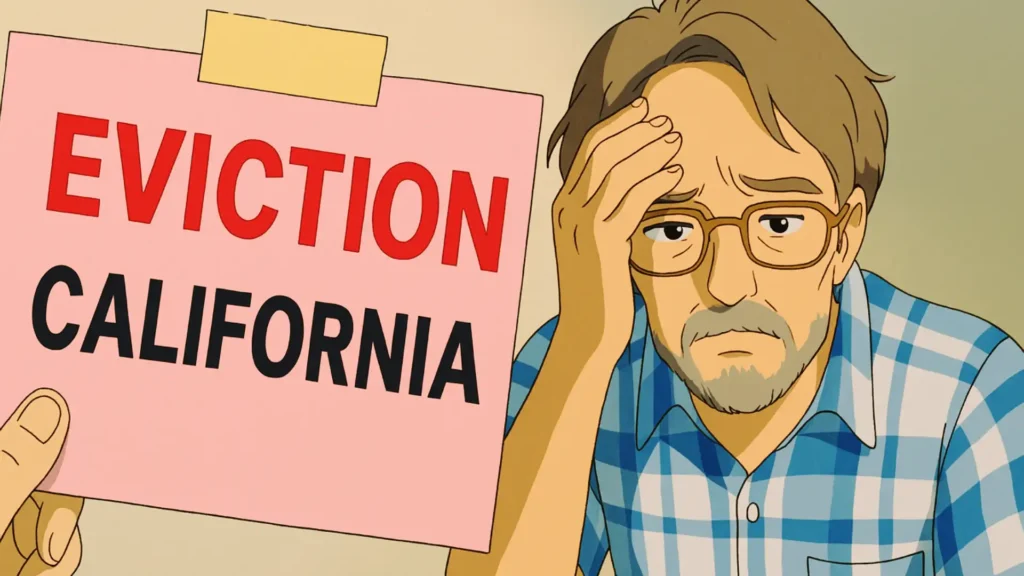How to Remove an Eviction from Your Record in California

An eviction on your record in California can make it difficult to rent, harm your credit, and affect job applications that require background checks. Fortunately, California law provides legal options for sealing or removing certain eviction cases from public view—especially if the case was dismissed, settled, or filed during the COVID-19 pandemic.
This guide explains how California residents can take action to clear or reduce the impact of an eviction and move forward with better housing opportunities.
Can You Remove an Eviction from Your Record in California?
Yes. Under California law, certain eviction records can be sealed, expunged, or even prevented from becoming public in the first place. This is especially true if:
- The case was dismissed
- The court ruled in your favor
- The eviction was filed during COVID-19 protections
- There was no judgment entered against you
Even if the eviction was granted, you may still take action to vacate or seal the record under specific conditions.
Official Source: California Code of Civil Procedure §1161.2 – Governing access to unlawful detainer (eviction) records.
Why Removing an Eviction Record Matters
- Increases rental approval chances
- Restores credit and housing reputation
- Protects your privacy from public background checks
- Prevents rejections from jobs or services tied to housing history
Even one eviction on your record can follow you for years unless you take steps to remove or seal it.`
Steps to Remove an Eviction from Your Record in California
Step 1: Review Your Eviction Record
Start by checking the status and outcome of your case:
- Search court records at your county’s Superior Court website or use California Courts Case Search Tool
- Look up your case by name or number
- Verify the disposition (e.g., dismissed, judgment entered, settlement)
Also check your credit report via AnnualCreditReport.com and request your rental history from tenant screening services like CoreLogic or TransUnion SmartMove.
Step 2: Determine Whether the Case Qualifies for Sealing
Under California Code of Civil Procedure §1161.2, certain eviction cases are automatically or optionally sealed, including:
Automatically Sealed:
- Filed during COVID-19 protections under Assembly Bill 832
- The landlord failed to win the case within 60 days
- The case was dismissed or resolved in the tenant’s favor
Eligible for Sealing:
- Cases resolved via stipulated settlement
- Cases where vacating the judgment is granted
- Tenant has shown undue hardship due to the record
Step 3: File a Request to Seal the Eviction Case
If your case wasn’t automatically sealed, you can file a motion to seal the eviction under CCP §1161.2.
What You’ll Need:
- Motion to Seal Court Record (some counties provide a template)
- Case number and party details
- Supporting documents (dismissal form, stipulation, proof of hardship)
- A declaration explaining how the public record causes harm
You must file the motion in the same court where the eviction was heard.
For more help, visit: California Courts – Eviction Help Portal
Step 4: File a Motion to Vacate the Eviction Judgment (If You Lost the Case)
If the court ruled against you, you can still attempt to vacate the judgment using a Motion to Set Aside Judgment (CCP §473 or §1179).
Reasons that may qualify:
- You were not properly served
- You missed the court date due to a valid emergency
- You’ve resolved the issue with the landlord
- The judgment was entered by mistake or default
Timing Matters:
- 30 days if it was a default judgment (CCP §473(b))
- Longer under certain hardship provisions (CCP §1179)
Step 5: Use a Stipulated Judgment or Settlement Agreement
If you and the landlord agreed on a payment plan or move-out terms, you can ask the landlord to:
- Sign a Stipulated Judgment with a Dismissal Clause
- Support your motion to seal or vacate the eviction record
This can significantly strengthen your case for record sealing.
Many landlords are open to this—especially if you’ve repaid the rent or vacated the unit cooperatively.
Step 6: Correct or Dispute Tenant Screening and Credit Reports
Even after sealing the court record, eviction data may remain in rental databases or credit reports.
To fix this:
- Request your tenant screening reports
- File a dispute with documentation of court dismissal or sealing
- Contact bureaus like:
- CoreLogic SafeRent
- Experian RentBureau
- TransUnion SmartMove
Learn more: Consumer Financial Protection Bureau – Rental Background Checks
Tips to Improve Your Rental Chances After an Eviction
Even if the eviction can’t be sealed immediately, you can still increase your chances of finding housing:
Be Transparent
Provide a written explanation with your application and show proof of resolved issues.
Offer More Security
Consider paying a higher deposit or several months of rent in advance.
Show Stability
Provide documents showing stable employment and income.
Use a Co-Signer
A strong co-signer can reassure landlords about payment risk.
Frequently Asked Questions (FAQs)
Can an eviction be removed from my record in California?
Yes. Evictions can be sealed, dismissed, or vacated under various legal rules depending on case outcome and timing.
How long does an eviction stay on my record in California?
- Court records: Remain unless sealed
- Credit reports: Up to 7 years
- Tenant databases: Varies; typically 3–7 years
What qualifies for automatic sealing?
Evictions filed during COVID-19 protections, dismissed cases, or those not resolved in the landlord’s favor within 60 days may be automatically sealed.
What if I paid rent after the judgment?
You may be able to negotiate a stipulated dismissal or file a motion to vacate the judgment.
Can TPS Help Me Remove an Eviction from My Record in California?
Absolutely. At TPS, we help California tenants:
- File motions to seal or vacate eviction records
- Prepare legal paperwork and appear in court
- Negotiate settlements or stipulated dismissals
- Dispute eviction data on tenant screening reports
Don’t Let an Eviction Stop You—Take Back Control
An eviction on your record can feel like a dead end—but in California, the law gives you real tools to fight back. Whether you’re filing a motion, negotiating a settlement, or seeking sealing under state law, you have rights.
Start today with help from TPS, and take your first step toward a fresh housing future.
